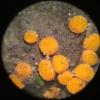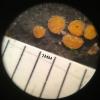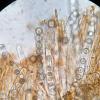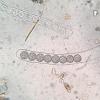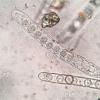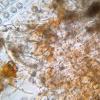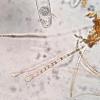
09-01-2026 17:41
Arnold BüschlenHallo, F. dilatata wird von vielen Bryoparasiten

10-01-2026 20:00
Tom SchrierHi all,We found picnidia on Protoparmeliopsis mur

07-01-2026 22:22
 Danny Newman
Danny Newman
Tatraea sp. on indet. hardwood The Swag, Great Sm

10-01-2026 01:18
 Danny Newman
Danny Newman
cf. Neovaginatispora fuckelii on indet. shrub Pre

07-01-2026 10:24
 Danny Newman
Danny Newman
Pezicula sp. on indet. hardwood Appalachian Highl

09-01-2026 10:08
 Blasco Rafael
Blasco Rafael
Hola, en el mismo habitat que la anteriorRetamaDia

08-01-2026 21:22
 Blasco Rafael
Blasco Rafael
Hola, He recogido esta muestra de Orbilia sobre Re

07-01-2026 17:29
 Marc Detollenaere
Marc Detollenaere
Dear Forum,On a barkless Populus I found some smal

10-11-2021 17:33
 Riet van Oosten
Riet van Oosten
Add-on topic http://www.ascofrance.com/forum/7059

07-01-2026 10:05
 Danny Newman
Danny Newman
cf. Chaetospermum on XylariaCosby Campground, Grea
Asci are about 232-297 by 17-24µm and IKI-.
Spores in asci appear in 3 forms. 1. Smaller, thick walled, hyaline, globose and multi-guttulate. 2. More or less the same as above but wrapped in a gelatinous sheathe, and 3. larger globose, hyaline ascospores with spines. I assumed that the spores ornamented with spines were the mature ascospores and measured those: 20-21 by 20-21µm. The spines are as long as 2.5 µm.
Excipulum appears to be textura angularis. Paraphyses have orange contents and are slightly swollen at the tips to a width of about 7.5µm.
Is this Ramsbottomia crechqueraultii? I have noticed that many online resources (Indexfungorum etc.) retain this species in Lamprospora. Any opinions are welcome!
Thanks in advance.
Ethan

Benkert & Schumacher (1985, Agarica 6(12): 28-46) stated in their emendation that the genus Ramsbottomia differs from Lamprospora in not being bryoparasitic, having ectal excipulum of t. globulosa or globuulosa-angularis, and having smooth margin (not crenulate / frayed like Lamprospora). I don't know if there are any molecular data on the Ramsbottomia-Lamprospora relationship.
There should be short and thick thin-walled hyphoid hairs on the receptacle, either hyaline or light brown. If the latter, you might compare R. lamprosporoidea too (if you acknowledge it as good species and not a synonym of R. asperior). I haven't seen yet the spore sheath to survive to their maturity, usually it disappears sooner. Some Scutellinias have similar one - S. trechispora or legaliae.
It's a very nice genus, I'm always glad when I find it, but I think it needs some molecular work to clarify how many species there actually are (2, 3, or 4, in different authors' concepts) and how to distinguish asperior from crechqueraultii (is the primary character ornamentation height or less globose shape?).
Viktorie
Best wishes,
Gernot
